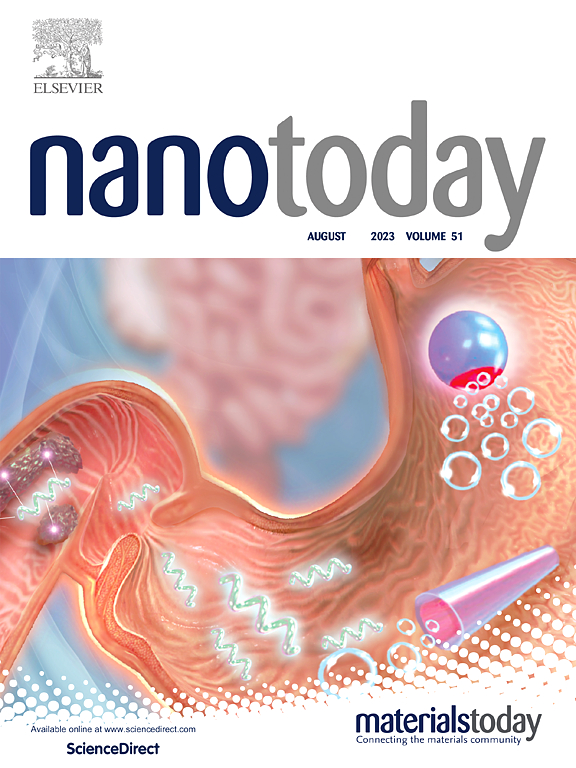Smart multifunctional Cu2O@RuO2 nanozyme for angiogenesis and osteogenesis in periodontitis
IF 13.2
1区 材料科学
Q1 CHEMISTRY, MULTIDISCIPLINARY
引用次数: 0
Abstract
Nanozymes have emerged as promising nanomaterials for the treatment of inflammation-related diseases by eliminating excessive reactive oxide species (ROS) and immunoregulation. However, persistent inflammation invariably causes severe alveolar destruction in periodontitis; and the alleviation of inflammation alone by neglecting the impairment of vascular functions could not effectively realize periodontal regeneration. Herein, a multifunctional copper-ruthenium oxide-based yolk-shell nanozyme (Cu2O@RuO2, CRNC) is designed to promote effective periodontal regeneration. The ruthenium oxide (RuO2) shell serves to alleviate inflammation by eliminating ROS and triggering macrophage polarization, whereas the cuprous oxide (Cu2O) core acts as a responsive Cu2 + nano-reservoir for promoting angiogenesis and osteogenesis. Results demonstrated that CRNC could activate transforming growth factor β/phosphatidylinositol 3-kinase (TGF-β/PI3K) and hypoxia-inducible factors (HIF-1α) signals, aiding angiogenesis in the human umbilical vein endothelial cells and osteogenesis in periodontal ligament stem cells, respectively. The multifunctional CRNC nanozyme successfully decreased periodontal inflammation and ameliorated alveolar regeneration in a periodontitis model. This study provides promising insights into periodontitis treatment by targeting both angiogenesis and osteogenesis.
求助全文
约1分钟内获得全文
求助全文
来源期刊

Nano Today
工程技术-材料科学:综合
CiteScore
21.50
自引率
3.40%
发文量
305
审稿时长
40 days
期刊介绍:
Nano Today is a journal dedicated to publishing influential and innovative work in the field of nanoscience and technology. It covers a wide range of subject areas including biomaterials, materials chemistry, materials science, chemistry, bioengineering, biochemistry, genetics and molecular biology, engineering, and nanotechnology. The journal considers articles that inform readers about the latest research, breakthroughs, and topical issues in these fields. It provides comprehensive coverage through a mixture of peer-reviewed articles, research news, and information on key developments. Nano Today is abstracted and indexed in Science Citation Index, Ei Compendex, Embase, Scopus, and INSPEC.
 求助内容:
求助内容: 应助结果提醒方式:
应助结果提醒方式:


